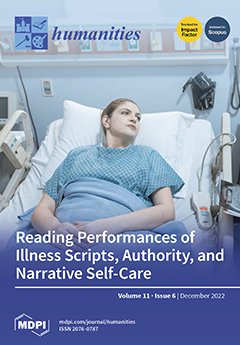In this essay, I argue that Haitian-American writer Edwidge Danticat, in short stories from her most recent collection,
Everything Inside (2019), challenges toxic forms of representation by attending to the imaginative potential of Haitian migrant experience within moments of collective trauma. This challenge,
[...] Read more.
In this essay, I argue that Haitian-American writer Edwidge Danticat, in short stories from her most recent collection,
Everything Inside (2019), challenges toxic forms of representation by attending to the imaginative potential of Haitian migrant experience within moments of collective trauma. This challenge, I suggest, is based on
bigidi, a Creole expression denoting permanent imbalance that is once philosophy, dance practice, musical aesthetic, and cultural tradition. The principle of being off-balance without falling, central to how bigidi finds expression in Guadeloupean
swaré-lé-woz and other forms of Caribbean dance, interweaves rhythm, music, and bodily movement with a community-oriented site of cultural expression. By saturating the narrative and readerly spaces of
Everything Inside with uniquely Caribbean elements of improvisation, audience interaction, and performance, Danticat foregrounds moments of shared intimacy and vulnerability between Haitians, disrupting the representational trauma circuit of migrant death.
Full article





